By now, it should be clear for everyone that this pandemic is not “just another flu.”
We’ve all seen its effects, how rapidly it spreads, and how it infects efficiently, even those who are the picture of health.
As preppers, we learned to prepare for whatever the future may throw at us, and this pandemic may be the ultimate survival test for many of us.
With all the scientific data at hand and with all the reports coming from countries with a better and more efficient health system than ours, we should be able to mitigate risks and continue living a healthy, fulfilling life.
Undeniable facts about the new virus
Based on the data gathered since December 2019, the virus has presented an average spread rate of 2 to 3 persons per infected individual. Also called an “R0” or “R-naught” value, scientists now say[1] SARS-Cov-2’s average is 2.2 individuals. However, since many individuals never show symptoms and are not tested, the value may, in fact, be much higher. These individuals are the “super spreaders” you’ve heard about in the news.
It is also known that the incubation period (the amount of time the virus is present in the human body, before showing symptoms) of the virus is up to 14 days. There are now reports of certain mutated strains that can have an incubation period of up to 45 days.
For most people, the median statistical period of incubation is listed as five days, nearly a full week. This research[2] states that diseased people are highly contagious during the first week of being infected. It is estimated the within 12 hours of infection, an individual can spread the virus to others while remaining asymptomatic for up to a week.
The COVID-19 virus infects the upper respiratory tract of humans, and it was demonstrated that it enters mainly through the nasal passages and the throat’s airway. However, it is also known to infect people through the mucus membrane of the eyes. Infected patients will produce “thousands to millions of viruses in their noses and throats, about 1,000 times more than SARS patients.”
If an infected individual coughs or sneezes in your vicinity, the virus gets airborne as it is expelled from the mount and nose of the infected person. The aerosolized particles that contain the virus are estimated to remain in the air for up to three hours. It’s even enough for an infected person to breathe heavily to expel highly infective water droplets and fluids.
The main issue that seems to be somehow overlooked is that the virus can stay present on various surfaces for multiple days. Plastic surfaces seem to offer the best “living conditions” for the virus, and on the Diamond Princess cruise ship surfaces, they found the virus alive after 15 days since the last passenger was disembarked.
How to reduce or eliminate the risk of getting infected
Officials in the White House may soon recommend individuals to wear face masks when in public to mitigate the risk of transmission. This measure is already imposed in many countries of the world, and it’s one of the main reasons that lead to the current shortage of face masks.
I believe it’s important to distinguish fact from fiction regarding these face masks. It’s crucial to understand what type of mask an individual should wear, how to wear it properly, and, most importantly, why we should wear one.
Let’s review what we can do to protect ourselves and what gear you should seek to own:
Face masks
Wearing a medical mask is one of the preventive measures meant to limit the transmission of respiratory infections, including infection caused by the new coronavirus (COVID-19). However, as stated in the media and as instructed by medical specialists, only wearing a mask is not sufficient, so it is necessary to adopt other measures, among which the most important ones are to respect the hygiene norms.
What is a medical mask?
A medical mask (or surgical mask) is an item used to prevent the transmission of infections. A proper medical mask needs to cover the nose and mouth and has elastic loops/circles that are fastened by the ears. In general, these masks help to limit the spread of germs.
They are ideal when coughs or sneezes in your vicinity and by wearing such a mask, you can protect yourself, but also prevent the contamination of other people in case you have the virus, and you are asymptomatic.
So to be clear: Wearing a mask is mostly recommended from protecting others, and they only work if everyone wears on.
The recommendations related to the medical mask are addressed, especially to people who have the infection or are exposed. People who are exposed to or at high risk of getting the disease should wear a medical mask. Anyone looking after an infected person in a hospital setting must wear a medical mask.
Who should wear a medical mask?
Wearing a medical mask is recommended for:
- People with symptoms of respiratory infections
- People who have been in contact with patients with respiratory infections
- Those who visit hospitals or any other medical facility
- Medical staff
- All food industry personnel, regardless of their role in the process of manufacturing and distributing food
- Truckers and drivers of public transportation
- Persons working in insufficiently ventilated places
Precautions related to saliva droplets:
In case an infection spreads through saliva droplets released by a coughing or sneezing person, the use of a rectangular medical mask is highly recommended. Influenza and certain types of bacterial meningitis fall into this category. It is recommended that both the infected person and others should wear face masks. It is very important that the caregivers wear a mask every time interaction with a patient is required, but also to have a new one every time they come in contact with the patient.
Precautions for airborne transmission:
Lung or throat infections that spread through small viral or bacterial airborne particles are often inhaled by others. The new coronavirus, SARS, and tuberculosis are the most common infections that fall into such a category. It is mandatory for the infected person n to wear a face mask (medical or otherwise). All persons who come in close contact should wear an N95 breathing mask. This is a specially designed face mask that includes a filter to provide protection against small particles in the air. These masks are usually rounded.
How do you correctly wear a face mask?
The World Health Organization (WHO) recommends that the medical mask be placed “carefully over the nose and face and held close to reduce the space between the face and the mask.” Avoid touching it during wearing and to be thrown away when it is moistened. Also, WHO advises that when the mask is removed, one should avoid touching the front of the mask. Use the cords that attach to the ears to dispose of the mask.
If you are wearing a medical mask, make sure that:
- The mask fits on the face as best as possible. The elastic loops are positioned correctly so that the mask stays still and firmly on your face.
- The mask covers the nose, mouth, and chin adequately without living exposed areas.
- Avoid touching the mask since doing so will compromise the efficiency of the protection provided by the layer of the mask. If you have to touch the maks, wash your hands first.
- When you need to take the mask off, avoid touching the exterior protective layer as it may be contaminated with germs.
- Make sure you discard the mask properly and seal it in a plastic bag before you do so.
- Avoid wearing a medical mask for more than a day.
- Replace the mask immediately if it is wet or damaged.
A face mask doesn’t offer absolute protection
There is a big concern among the general public and doctors about these masks and how people are tricked into buying them at inflated prices, leaving the medical personnel having to work with adequate protective gear. It is the false sense of security that people get by wearing these masks that are causing all this panic buying.
There are various reasons why a face mask may not be ideal and why it won’t protect you completely. For example, it is hard to find one that will fit perfectly around the nose and mouth, that you can keep it for a long time. Except, of course, for the full face masks with filters that can be replaced.
The first moment you touch your nose or mouth when wearing a mask, its protective role is compromised. For example, in a medical environment, there are clear regulations and recommendations regarding when medical staff needs to wear the masks and what protection is required depending on the type of infection the patients have.
What mask to buy
If you still manage to find face masks available, I recommend buying the N95 or N100 (FFP-2 or FFP-3 if you live in Europe). These masks offer the best protection against virus infections, and that’s why they are hard to find these days. The best ones you could buy are the N100 masks (or FFP-3), so if you do manage to find some, don’t think twice about buying them.
Some are also buying the N90 (FPP-1) masks, but these are of lower quality compared to the above-mentioned classes.
Back in December 2019, before the coronavirus situation started to unfold and get the attention of the entire world, I bought a few masks (because, you know, I’m crazy and paranoid – like most preppers out there). I can recommend the 3M Particulate Respirator 8233, but also some EU brands that I bought from Amazon.de (they were much, much cheaper at that time): the 3M Aura FFP3 and the TECTOR FPP3.
I already had a few N95 masks that I bought for my Travel bug out bag (I wrote about such a bag in a previous article and why you should have one), but I said that having a few more, won’t hurt.
I wear them in combination with protective glasses since a full face mask was an expensive option at the time being.
Let’s review the mask classes since this information will prove useful when deciding which mask to buy, especially now that there’s a shortage of such items.
Masks Classes:
N90 (FPP-1) Masks
Total leakage: maximum 25%, average values not greater than 22%. It offers protection against non-toxic and non-fibrogenic dust, maximum concentration up to 4 times the limit value of half masks.
N95 (FPP-2) Masks
Total leakage: maximum 11%, average values not greater than 8 at least 95%. IT offers protection against dust, mists, and fumes harmful to human health. Filters for solid and liquid particles, protecting against harmful substances. Their concentration is up to 10 times the limit of half masks and up to 15 times the limit for full masks.
N100 (FPP-1) Masks
Total leakage: not more than 5%, average values not more than 2 at least 99%. It offers protection against toxic substances, but also against droplets of aerosols, carcinogenic substances, radioactive substances, enzymes, micro-organisms such as viruses, bacteria, fungi, and their spores, as well as against many other harmful substances. Their concentration is up to 30 times the limit value in the case of half masks and up to 400 times the limit value in the case of full masks.
Bottom line
Whether you decide to buy a classical half mask, a filtering half mask (with attached, interchangeable filters), or full masks, remember what class mask is the most suited for virus pandemic protection.
Even more, a face mask is only one part of the equation, social distancing and proper hygiene are equally important to protect you (but also to protect others) against infections.
Resources
[1] https://www.ncbi.nlm.nih.gov/books/NBK554776/
[2] https://www.medrxiv.org/content/10.1101/2020.03.05.20030502v1


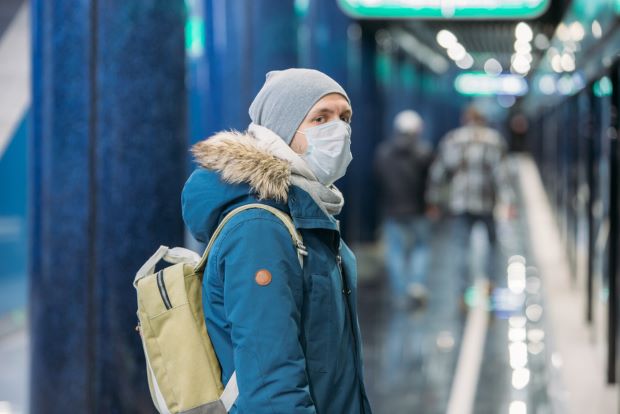

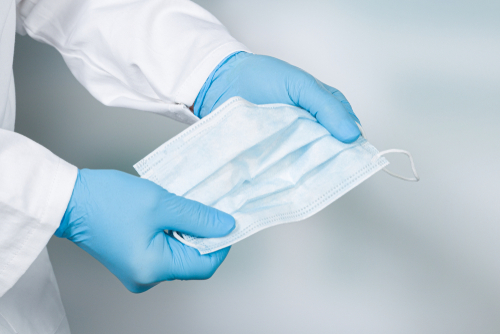

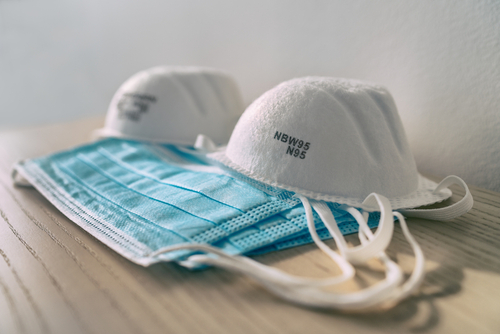
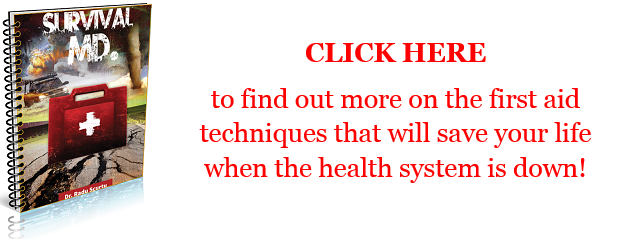



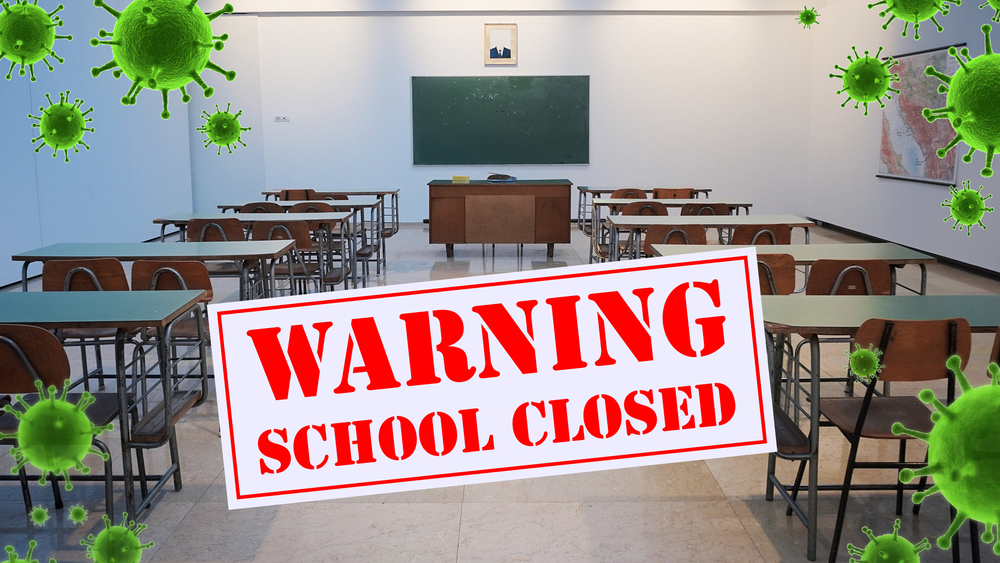

Survivormann99 | April 12, 2020
|
I have seen masks that are described as being “PM2.5.” I understand that the 2.5 refers to microns, and I expect that this means that nothing larger than 2.5 microns will get through the filter element. That would mean, I suppose, that they actually filter out smaller particulate matter than an N95 mask would.
The masks include replaceable filters that include charcoal layer,, and the mask in which they are used are washable. I suspect that they are mostly sold in Asia or Europe, and have not undergone American testing nor obtained NIOSH approval.
Given the national mask shortage, it may well be “any port in a storm” for many people. How do they compare to N95 masks for protective qualities?
Bob L. | April 12, 2020
|
There’s never a call for wearing a mask due to the seasonal flu which kills tens of thousands of Americans every year.
Here’s the CDC’s own estimates on the flu from Oct. 1, 2019 thru April 4, 2020.
39,000,000 to 56,000,000 flu illnesses
18,000,000 to 26,000,000 flu medical visits
410,000 to 740,000 flu hospitalizations
24,000 to 62,000 flu deaths
I don’t intend to wear a mask even if it leads to an arrest.. I go about my business as normal.
There’s a big deep state scam behind what is being forced upon America.
Bill | April 12, 2020
|
I’m with you Bob. I’m into nutritional supplements such as zinc, Vit A,C, D3. I don’t expect to get sick because my body is an inhospitable place for a virus. I’m being careful what I touch, or who is sneezing, but I too am not wearing a mask. What a con job. And we’re all buying into it. Next comes mandatory vaccines, or no drivers licenses…..
Bill in Idaho | April 12, 2020
|
Just Remember – the “FLU Vaccine” is really useless. The shot you get produces antibodies which are 10 – 30 generations of mutation away from the virus which you ar exposed ti in April 2020. HOWEVER – the agents used to weaken (or kill) the active virus in the vaccine are both neurotoxins -and- excitotoxins – which means they will kill brain cells and synapses by the thousands (or millions). Hello Alzheimers, Dementia, and other ailments of the Central Nervous System.
Deborah | April 12, 2020
|
I’m wearing and making fabric masks. Since the first responders need the best ones, and they are hard to find, I’m making my own. I use 3-6 layers of fabric. Quilting fabric for the outside, and cotton blend for the lining. I’m using t-shirts to make the strings to tie with. Elastic can’t be found at a reasonable price. I’m not paying $50 or more for a few yards of it.
T-Dogg | April 18, 2020
|
bungie cords have several layers of elastic that can be used for a home made facemasks.
Carlene Wilson | April 13, 2020
|
I bought the 2.5 masks through your site with ape survival. No carbon filter replacements. Was that intentional?